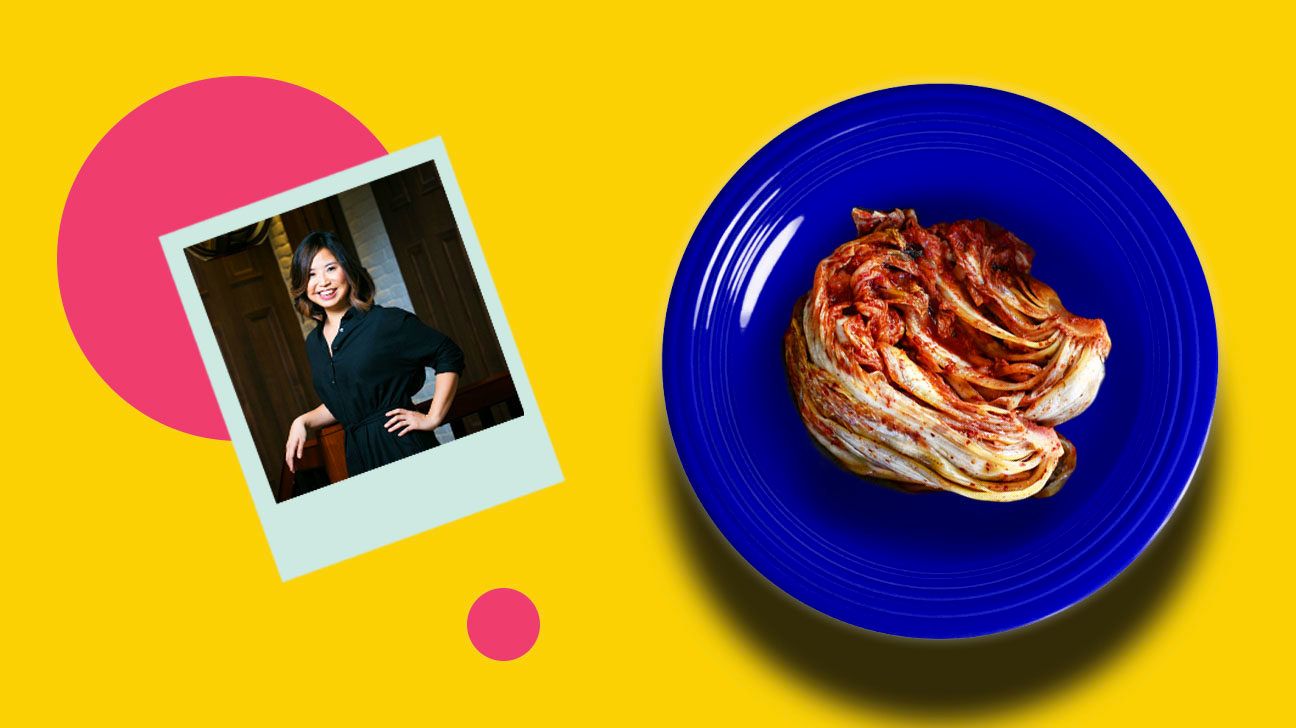
This recipe comes courtesy of Seung Hee Lee for “This Is Not the Kimchi You Know — It’s Better,” written by Grace Moon. Read Seung Hee Lee’s story here.
Ingredients
- 10 cups water
- ¾ cup fine sea salt or ½ cup kosher salt
- 5–6 pounds napa cabbage, quartered
- 1½ cups kelp broth or water
- 2 tablespoons glutinous rice flour (such as mochiko)
- 1 cup fish sauce, divided
- 1 cup gochugaru
- ½ large Korean pear or 1 medium Asian pear, peeled, seeded, and grated 3 tablespoons minced garlic
- 1½ teaspoons minced fresh ginger
- 3 cups daikon radish or turnips, julienned
- ¾ cup sliced Korean chives or scallions, cut into 1½-inch matchsticks (¼ cup more if leaving out Chinese parsley)
- ¾ cup sliced minari (Chinese parsley), cut in 1½-inch matchsticks (optional)
- 1 cup chopped beltfish, ½-inch thick, bones included (optional)
Directions
- Do early in the day: Stir water and salt in a large bowl or plastic container until salt is dissolved. Submerge cabbage quarters fully in liquid, soaking all sides of leaves. Keep cabbage submerged by placing a heavy object over it. After 4 to 6 hours, check if cabbage bends backward.
- Rinse cabbage twice and squeeze gently, folding leafy end toward center. Drain excess liquid from cabbage and set aside to brine.
- Whisk together kelp broth and glutinous rice flour in a small pot until fully combined. Set aside.
- Put cabbage in a separate large bowl and drizzle with ½ cup fish sauce. Let drain naturally.
- Cook kelp broth mixture over medium-high heat, stirring frequently. Once mixture bubbles and becomes thick like gravy, reduce heat to medium-low. Continue to whisk for another minute, then remove from heat and let cool.
- For the paste, combine gochugaru, pear, garlic, ginger, remaining ½ cup fish sauce, and glutinous rice flour gravy in a large bowl. Fold daikon radish, chives, and parsley, if desired, into the paste.
- Transfer cabbage to a separate large bowl. Wearing gloves, take about 1 cup of kimchi paste and rub each cabbage leaf with the paste. As you work inward, add roughly ¼ cup kimchi paste between leaves. (It’s best to place the chunky parts toward the root, where the cabbage is thickest.) Fold leafy part toward center of cabbage and place cabbage in a large plastic container. Keep going with cabbage until done.*
- Lay excess cabbage leaves on top of wrapped kimchi to minimize air contact. Layer plastic wrap over kimchi and push at sides to remove air.
- Fill a clean, resealable plastic bag with water and place it in another resealable plastic bag. Place doubled sealed bags on top of plastic wrap, squeezing out more excess air.
- Let the container sit in a cool place out of sunlight for 3 days if it’s winter or 1 to 2 days if it’s summer. Check every day for a faint sour note smell, which suggests fermentation.
- After fermentation begins, refrigerate to slow the fermentation. Optionally, wait 2 weeks. Enjoy over the next 4 to 6 months.
* To keep all the goodies in each layer, wrap any loose leaves around the stuffed cabbage as if swaddling a baby.
Original recipe by Seung Hee-Lee. Condensed for online reading by Grace Moon.
